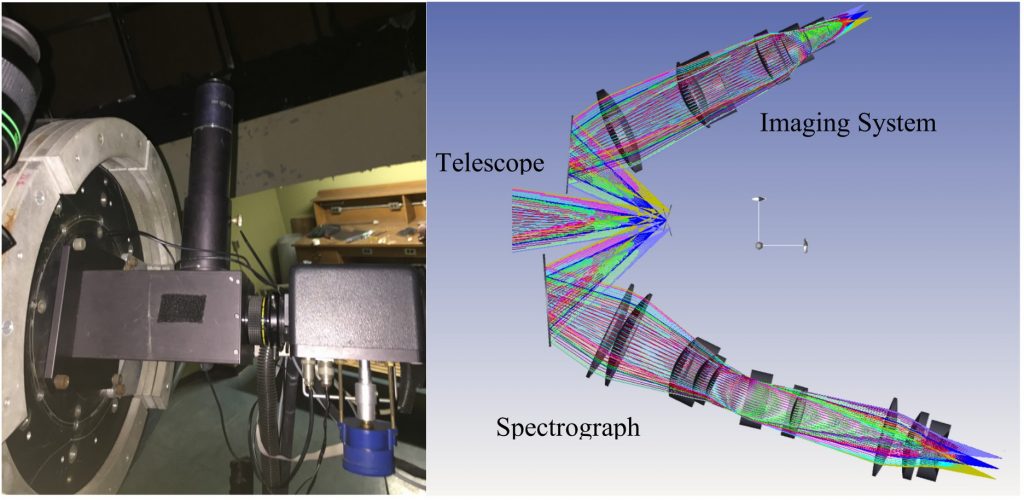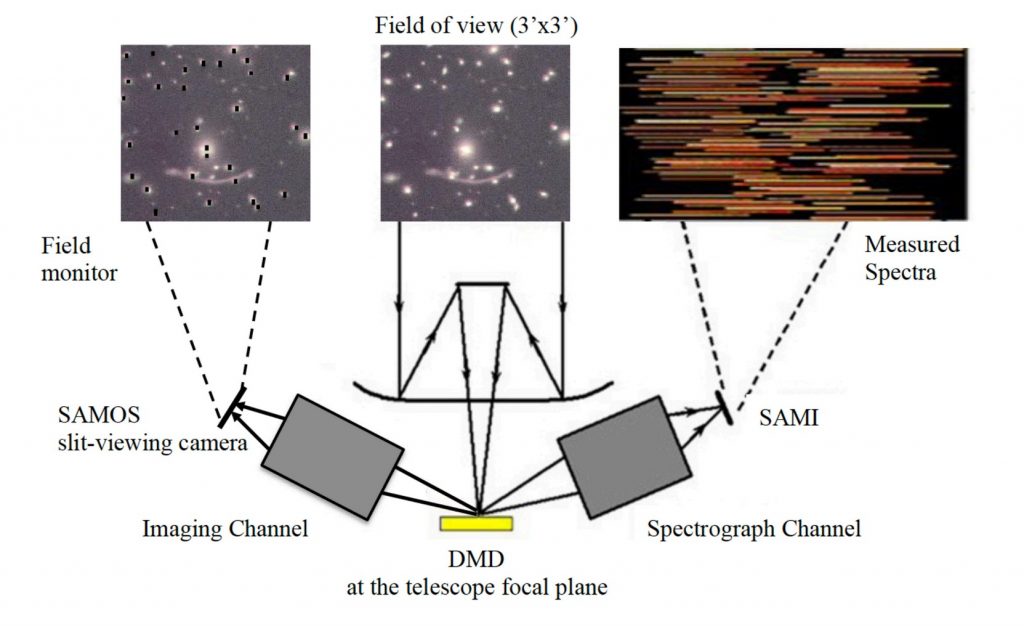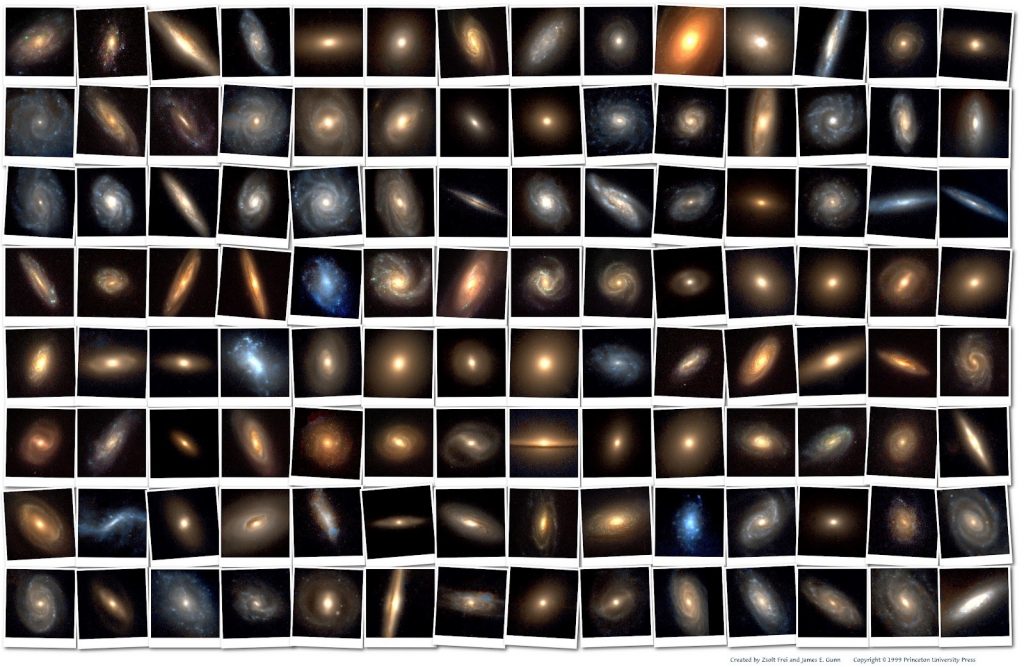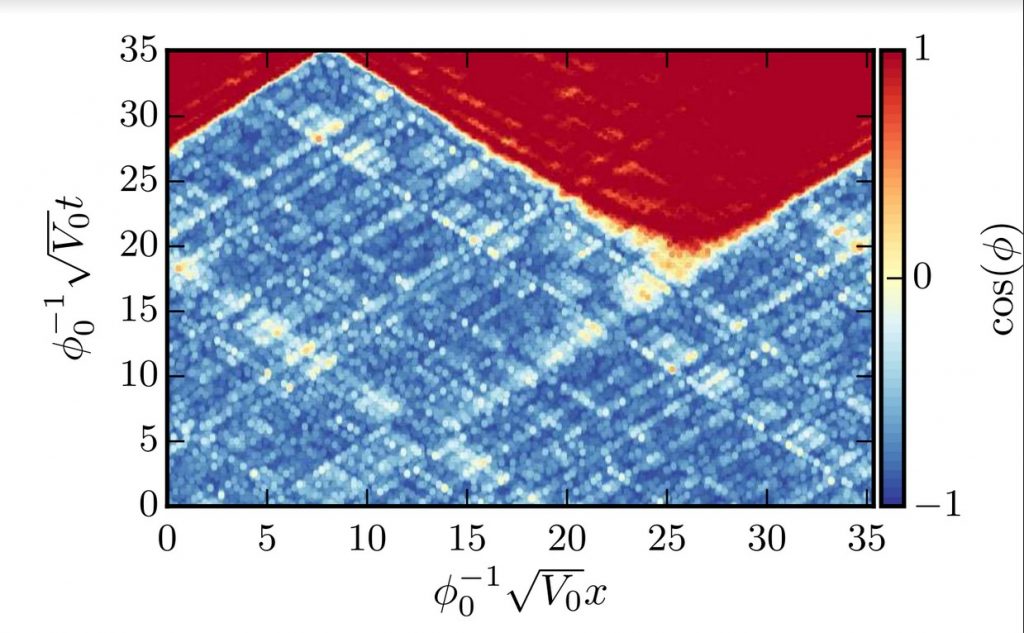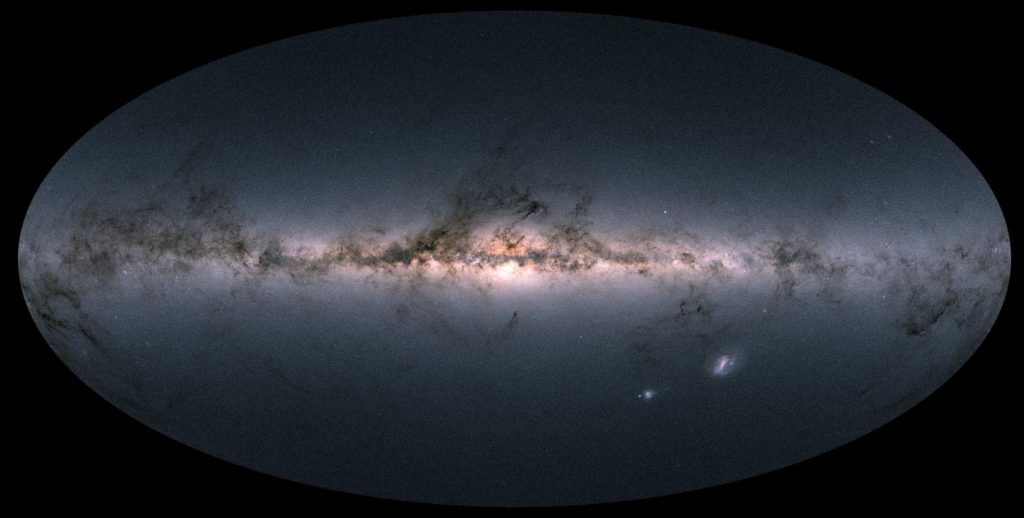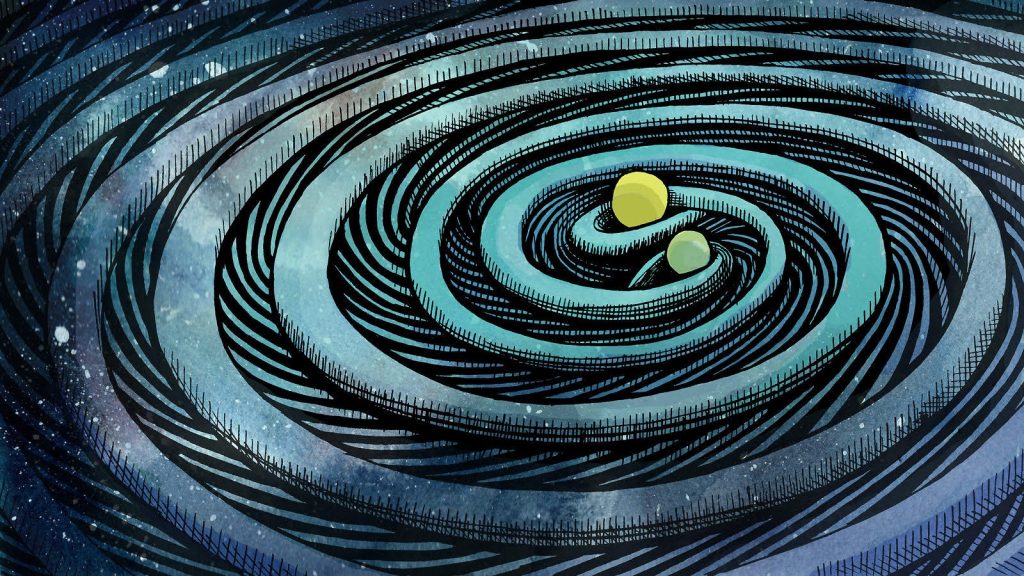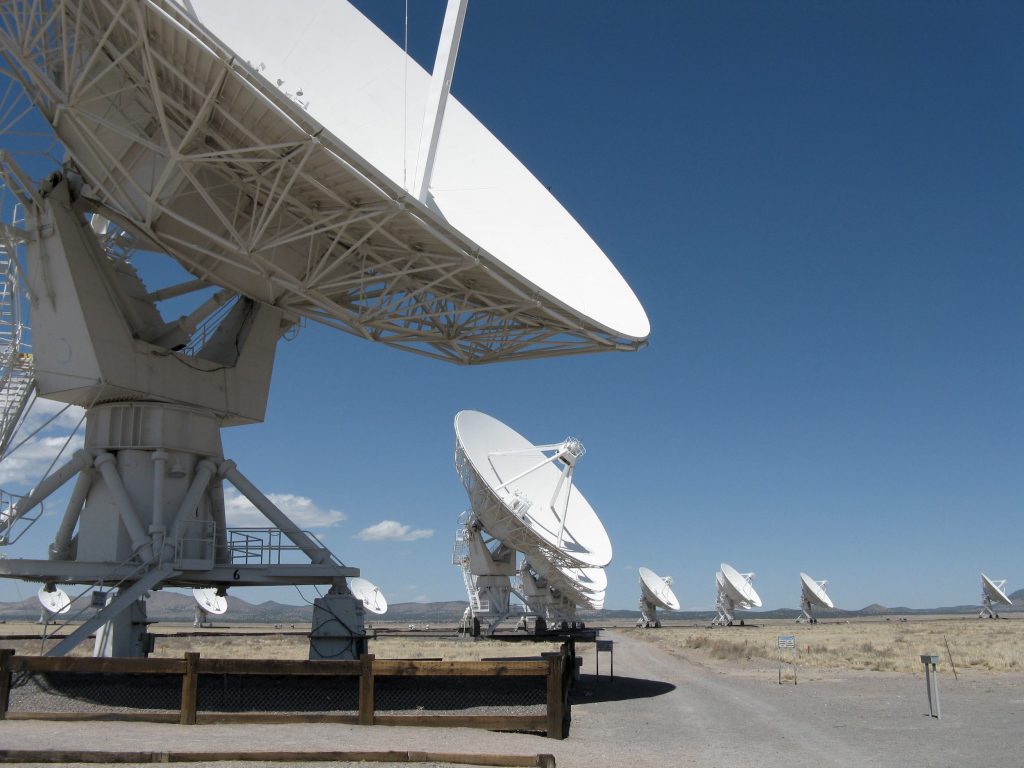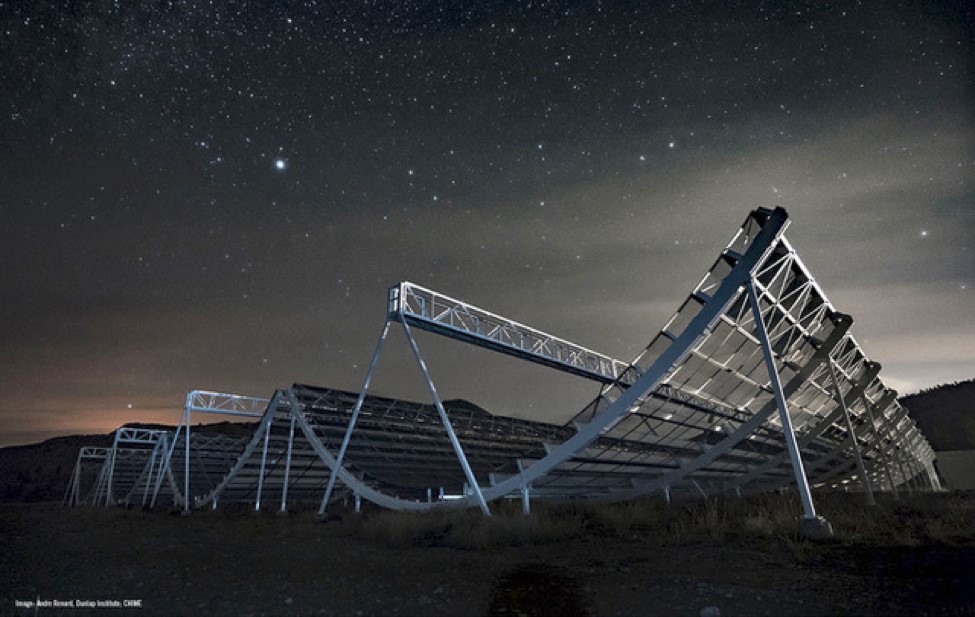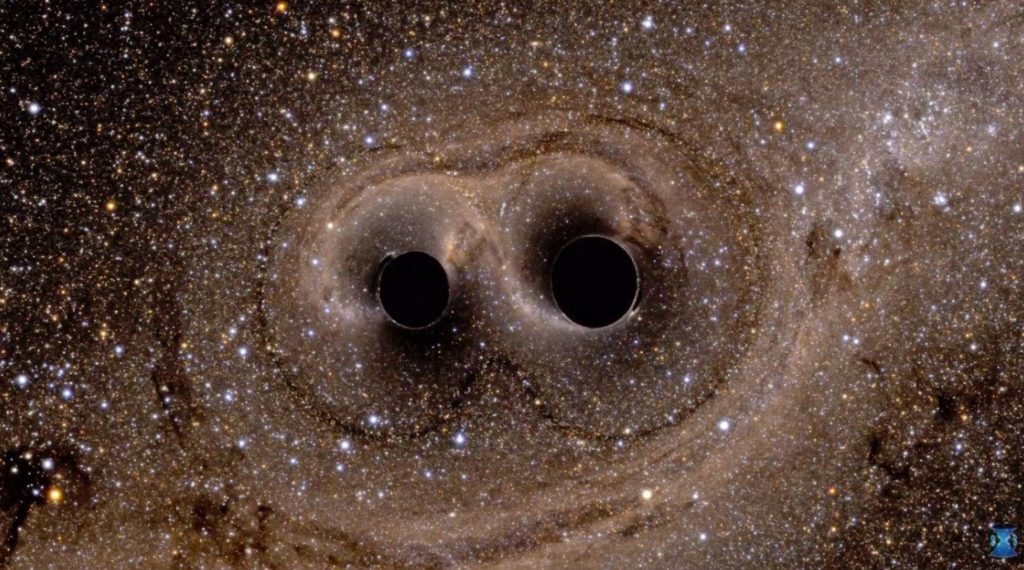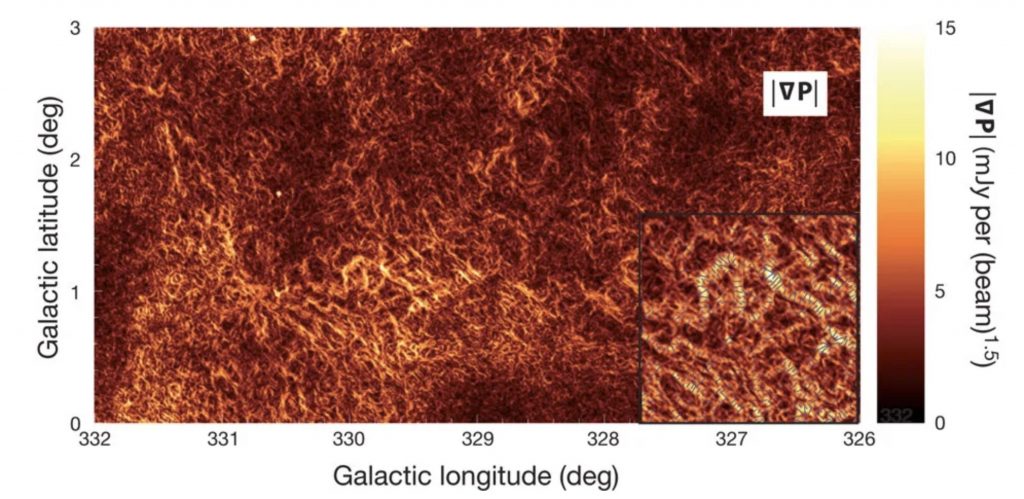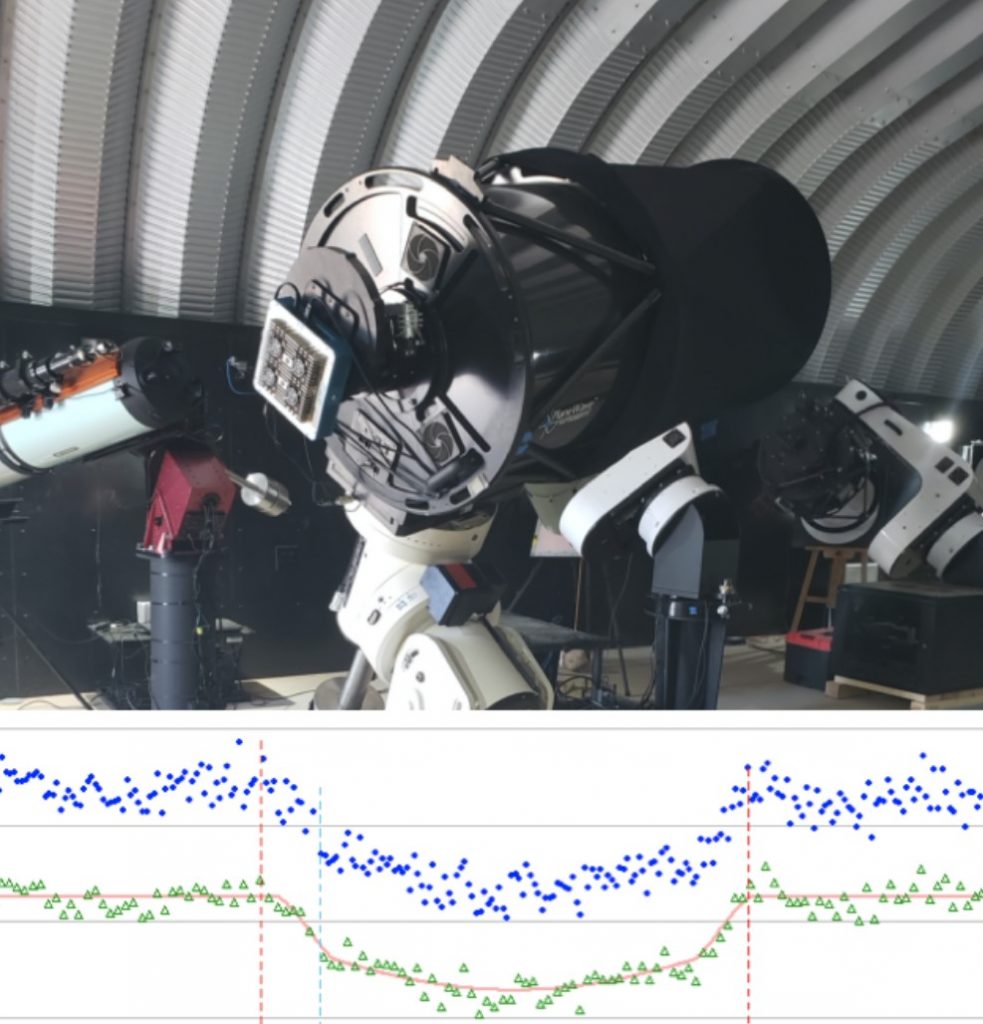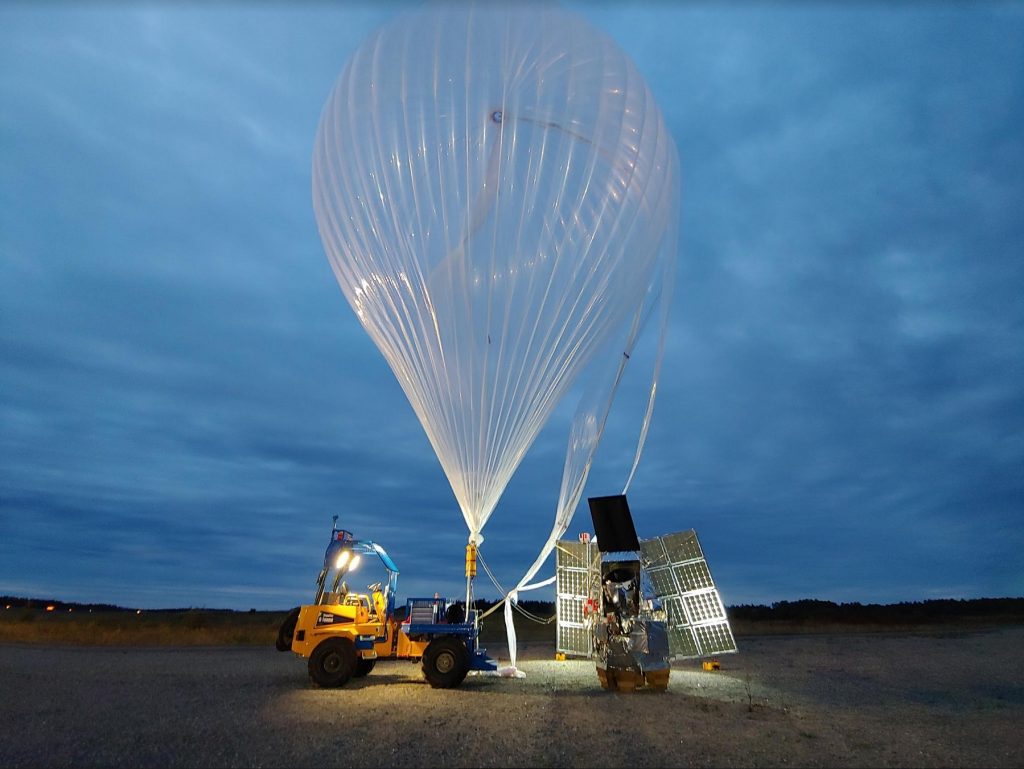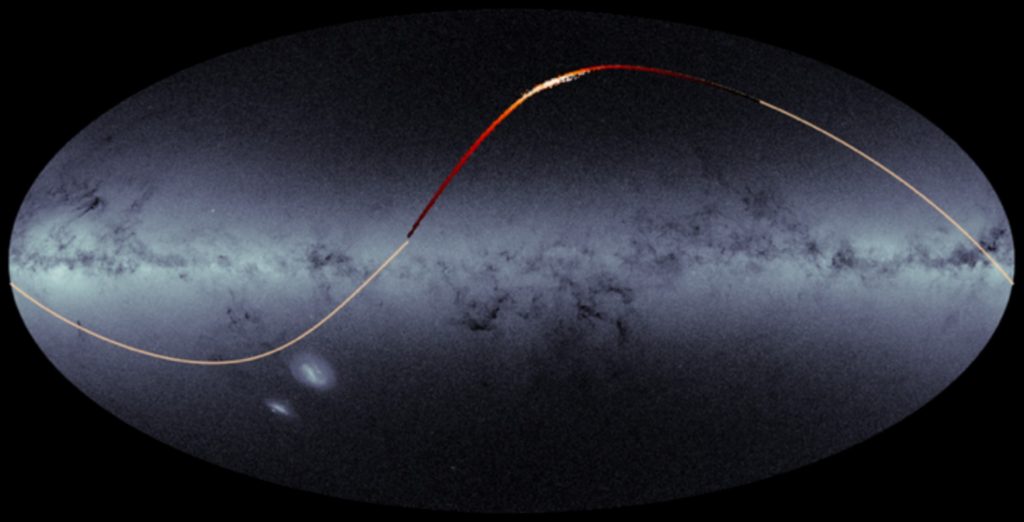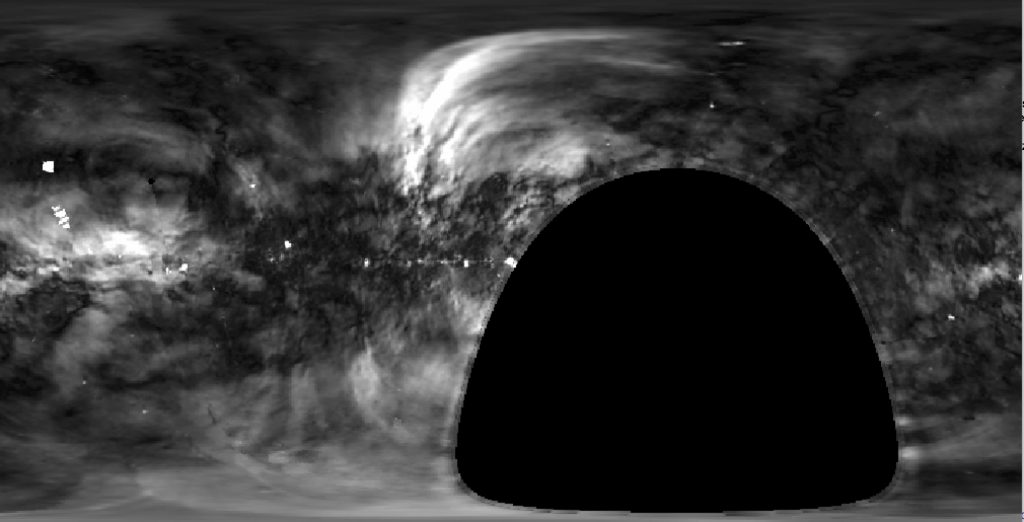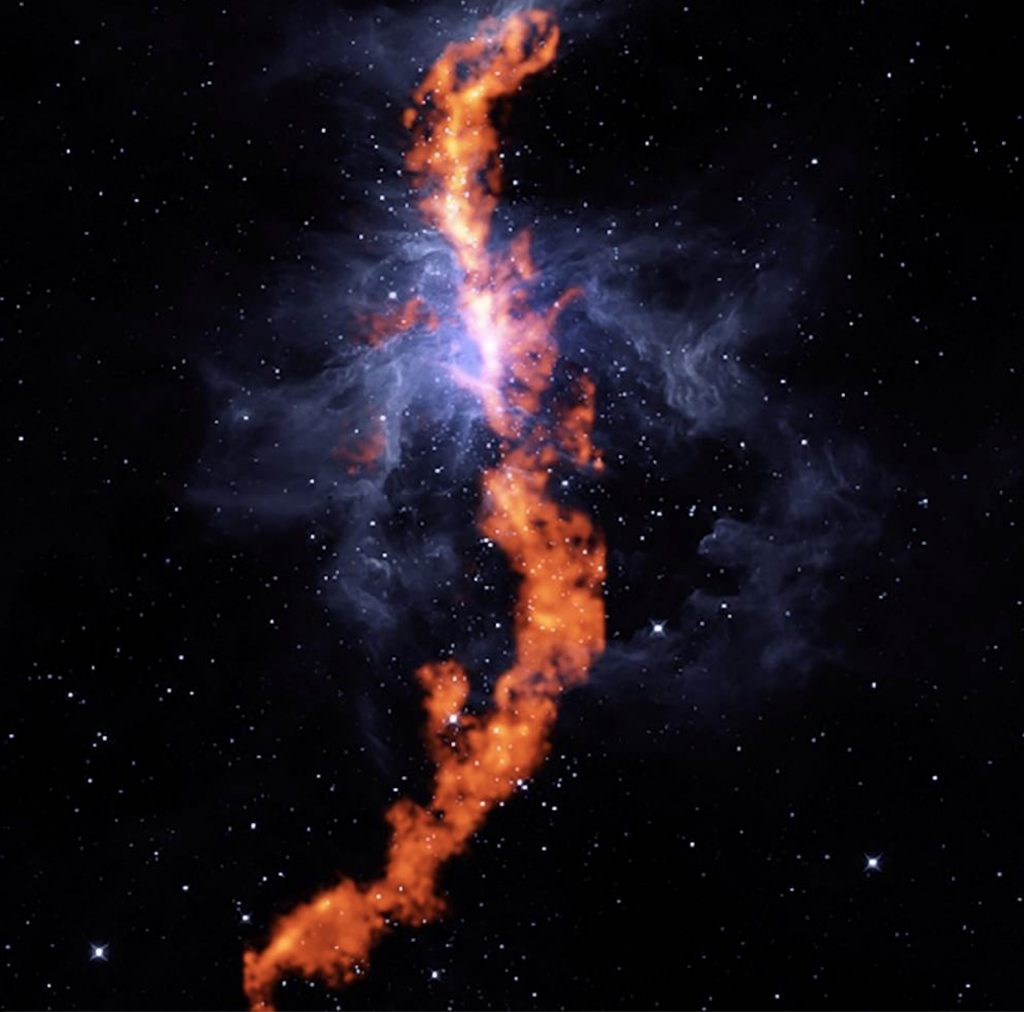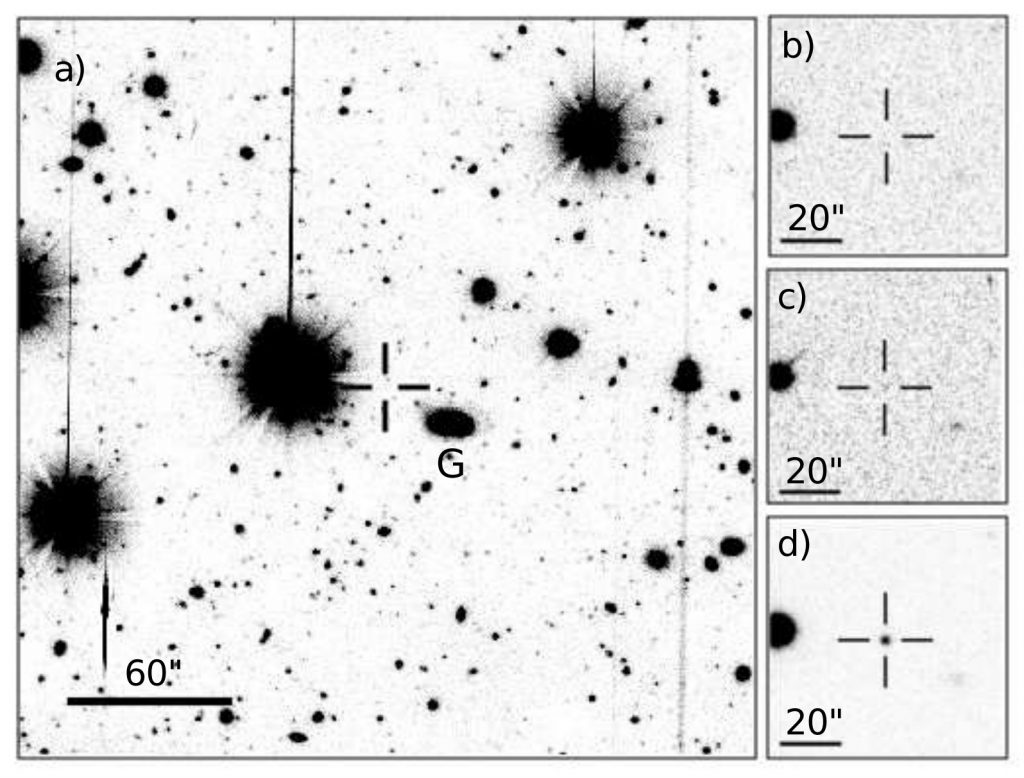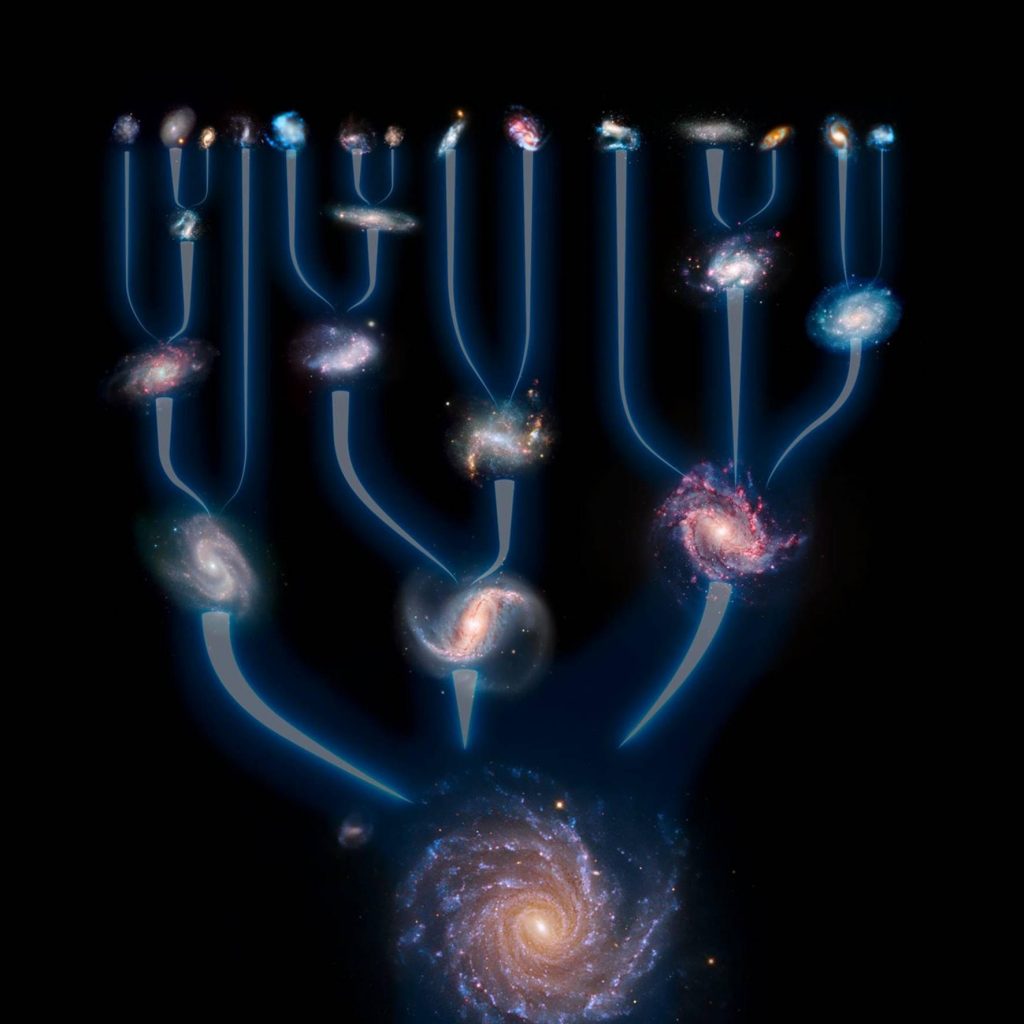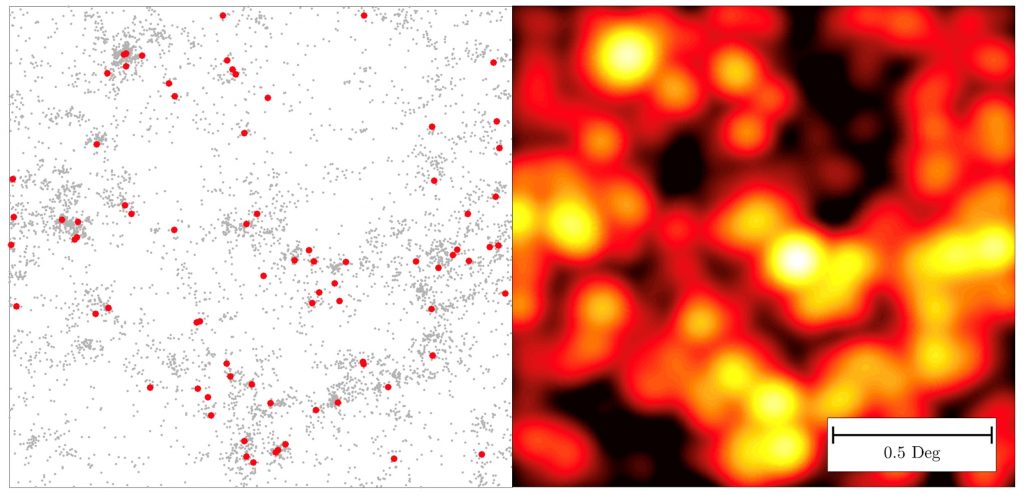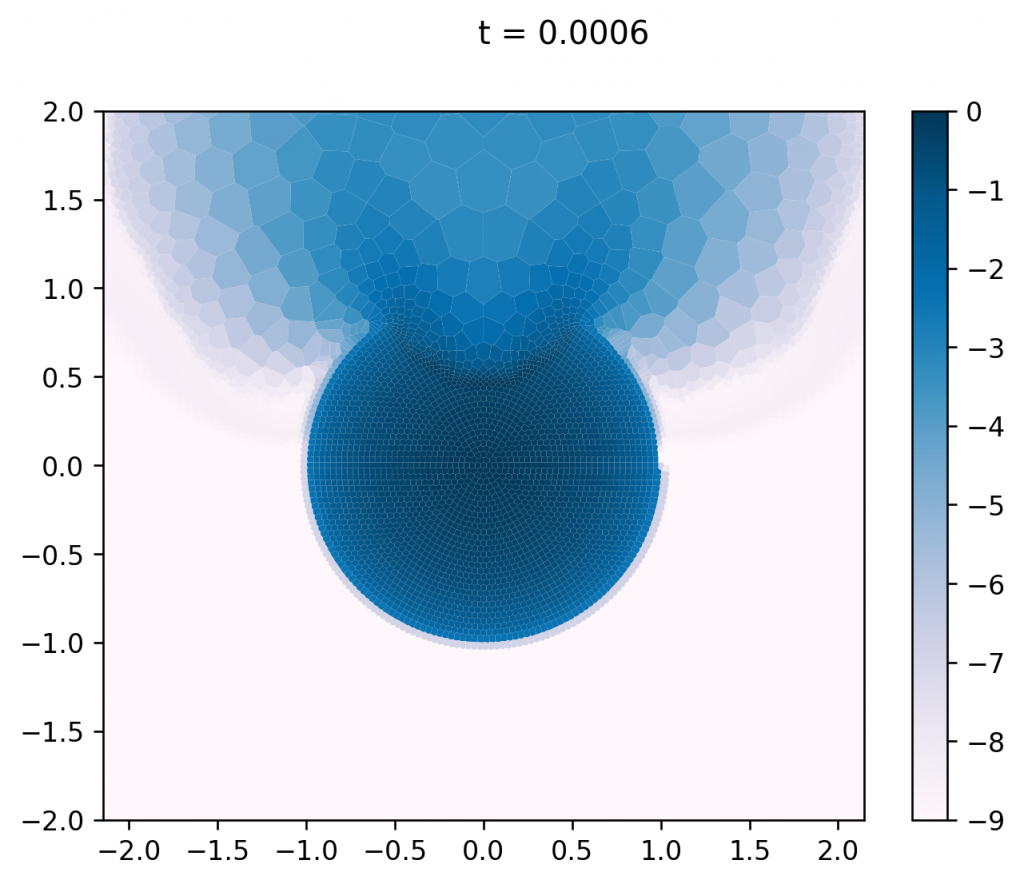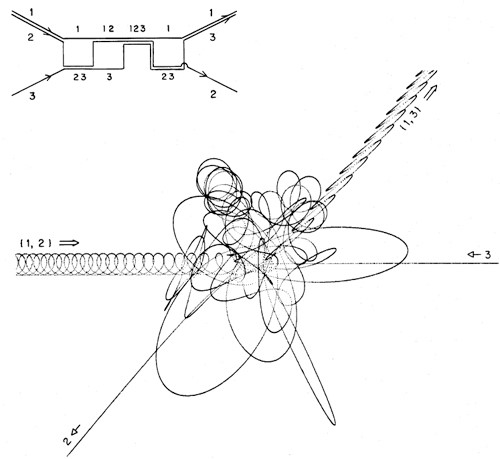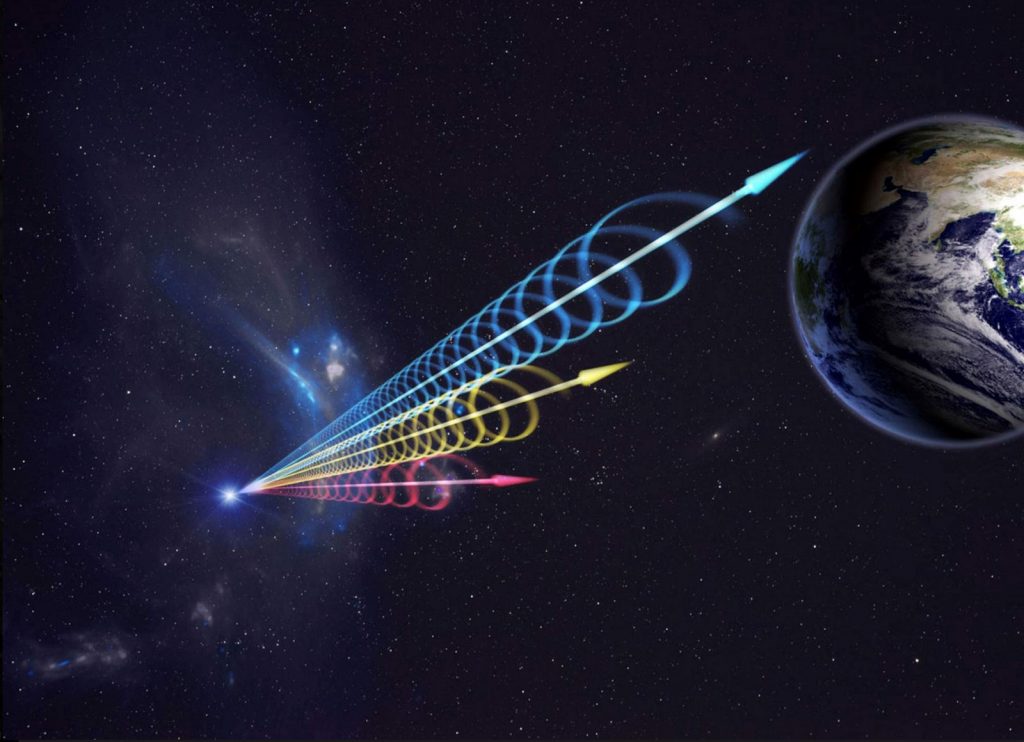
2020 SURP PROJECTS
2020 Summer Undergraduate Research Projects
DMD-based Multi-Object Spectrograph Development
The adaptive optics and spectral multiplexing in the infrared allow significant gains in the study of galaxy formation and evolution, and the multi-object spectrograph (MOS) is one of the most critical instruments. The Digital Micromirror Device (DMD) has been proposed as a potential piece of technology to develop the multi-object spectrograph. DMD can serve as a programmable slit array, located at the focal plane of the pre-optics, which enables the spectrograph to acquire hundreds of objects of interest in crowded fields simultaneously. Compared to the existing method for MOS, like conventional machined slit masks or large cryogenic slit forming mechanisms, DMD-based MOS can achieve smaller spectrographs at a very low cost. Further studies on the DMD-MOS design and spectral imaging processing are valued for the application of DMD-MOS.
We are going to design the DMD-MOS fed by the 16-inch telescope with F/18 beam in the seeing- limited resolution of 1.5”, including both spectroscopic and imaging modes within one instrument, as a prototype. As part of this project, students will be involved in designing, alignment the real spectrograph with equipment in our advanced optical lab. They will have the chance to gain the experience of installing the spectrograph onto the telescope and observing spectral images.
Not limited to NSERC
This project will be supervised by Dr. Shaojie Chen, Dunlap Institute.
—
Multi-Object Spectrograph Calibration and Hyperspectral Data reduction
Spectral multiplexing allows significant gains in the study of galaxy formation and evolution, and the multi-object spectrograph (MOS) is one of the most critical instrumentations. MOS enables the spectrograph to acquire hundreds of objects of interests in the crowded fields simultaneously, which saves tons of telescope time and improves the observing efficiency greatly. Accurate spectral calibration is fundamentally essential to any applications of the imaging spectral data. However, the calibration and the processing of 3-D spectral imaging data of MOS are more complex than traditional imaging spectrograph. MOS requires to create algorithms to calibrate all the spectra and correct the errors cross the full fields. In this project, we are going to do the preliminary research on the DMD-MOS calibration and hyperspectral data reduction. Students will be fully involved in compact imaging spectrograph calibration in our advanced optical lab, and coding the program for hyperspectral data reduction.
Not limited to NSERC students
This project will be supervised by Dr. Shaojie Chen, Dunlap Institute.
—
Searching for Gen-II Planets
NASA’s Kepler mission has found many exo-planets that are now believed to be formed in the early stage of the stars’ lives, the so-called gen-I planets. This project aims to interrogate the Kepler data further to look for signs of earth-like planets that formed later, after the proto-planetary disks have disappeared. These are the so-called gen-II Planets.
Not limited to NSERC students
This project will be supervised by Dr. Yanqin Wu, DADDAA.
—–
Charting the growth of galaxies
Galaxies evolve on astronomical timescales of millions or even billions of years. The study of galaxy evolution is therefore based on inferring connections between various galaxy populations across cosmic time. This requires knowledge of galaxy properties, such as distances, sizes, masses, ages, and star formation rates. The student will learn how to extract such information from galaxy images and spectra. Driven by the student’s interest, the project will tackle these important scientific questions: What triggers or shuts down star formation in galaxies? How do active black holes affect galaxies? What happens to galaxies when they collide with each other?
The student will acquire skills on using Python to handle large datasets and images, to visualize and to present findings. These skills are relevant for future research projects on a variety of topics not limited to galaxies, astronomy and academia.
Funded by Dunlap, no NSERC requirement
This project will be supervised by Dr. Allison Man, Dunlap Institute.
—
Metastable Vacuum Decay in Time-Dependent Backgrounds
This project will explore the decay of metastable field configurations
induced by the presence of quantum fluctuations, so called false vacuum
decay. The decay proceeds via the nucleation, expansion and subsequent
coalescence of bubbles of a new phase, similar to a pot of water
boiling. These transitions play a crucial role in modern theories of
the early Universe based on false vacuum eternal inflation, as well as
those featuring spontaneous symmetry breaking at higher energies as in
grand unified theories (GUTs). Using a novel new real-time formalism,
the project will explore the dynamics of the decay process in some
models of interest in early Universe cosmology. In particular, the
impact of a dynamically evolving background on the nucleation rate will
be explored, which is only possible within the real-time formalism.
This project will be supervised by Dr. Jonathan Braden, CITA Postdoctoral Fellow.
—–
Exploring Galaxies in Cosmological Simulations
Cosmological simulations are commonly used in astrophysics to interpret existing observations, as well as to make predictions for future surveys. This project will focus on analysing the high-resolution FIRE simulations (Feedback In Realistic Environments, https://fire.northwestern.edu/). These are a suite of zoom-in simulations of individual galaxies, grown in a cosmological environment, that have been shown to successfully reproduce a wide range of observables. This project will likely involve producing mock observations that can be directly compared to real data, but the exact details can be adjusted depending on the student’s interests. Over the course of this project, the student will develop skills related to analysing simulated data and scientific computing with Python, as well as learning about topics related to numerical simulations and galaxy formation.
This project will be supervised by Dr. Laura Keating, CITA Postdoctoral Fellow.
—
The Detectability of Extreme Exoplanetary Topography
Many planets with masses comparable to Jupiter’s have been detected orbiting their host stars at distances 10 times closer than the Earth orbits the Sun. Explaining how these “hot Jupiters” are brought into the locations we see them today remains an outstanding question in exoplanetary science, since these massive planets likely formed much further away from their host stars, where there is more gaseous and rocky material to build the planet from. One way to bring hot Jupiters so close to their host stars are though violent gravitational interactions with other planets or a distant stellar companion, placing the planet on a highly eccentric orbit, which is later circularized by energy dissipation in the planet or star. A testable prediction for hot Jupiters formed this way is the direction the host star is rotating should be different than the direction the planet orbits the host star, since the gravitational interaction “tilts” the planet out of its original orbital plane.
Astronomers are now able to measure the angle between the hot Jupiter’s orbital plane and the host stars equatorial plane, called called the stellar obliquity. Recently, it was discovered hot Jupiters orbiting hot stars had much higher obliquities than those around cool stars. The leading theory for high stellar obliquities around hot stars is due to differences in how hot and cold stars dissipate the planet’s angular momentum, but a systematic analysis comparing the leading tidal theory to the stellar obliquity measurements has yet to be done. For this project, I am looking for an undergraduate to use newly acquired rotation and obliquity measurements for stars in exoplanetary systems containing hot Jupiters, and do simulations comparing the predictions of the leading tidal theory to the exoplanetary data. Although knowledge of python and an advanced course in Classical Mechanics is preferred, no other formal prerequisites are needed for this project.
This project will be supervised by Dr. JJ Zanazzi, CITA Postdoctoral Fellow.
—
Milky Way dynamics with Gaia and APOGEE
A revolution in our understanding of the Milky Way galaxy is ongoing due to the Gaia mission. Gaia is an astrometric space mission measuring the positions, velocities, and other properties of more than one billion stars. Maps from Gaia’s second data release in April 2018 have given us an unprecedented view of our Galaxy, revealing an unexpectedly rich amount of substructure in the phase-space distribution of stars indicative of the effect of spiral arms, the bar, and satellite mergers old and new. Spectroscopic data sets such as those from SDSS-IV/APOGEE complement the Gaia data by providing details about each star like its age and chemical composition that can be used to unravel our Galaxy’s formation history. In this project, we will use data from Gaia and APOGEE in conjunction with modern machine-learning tools to study the dynamics of stars in the Milky Way disk, halo, and bulge.
NSERC Only
This project will be supervised by Prof. Jo Bovy, DAA/Dunlap Institute.
—
Constraining chemo-dynamics within massive globular cluster cores
The inner cores of massive globular clusters can reveal a wealth of information regarding our Galaxy. Their stellar dynamics can potentially identify the signatures of intermediate mass black holes and their stellar chemical information can even tell us how the globular cluster formed within the Milky Way. We have used the Gemini telescope to resolve the stars within the inner core of a large globular cluster to yield their stellar spectra. From these spectra we hope to constrain enough chemo-dynamical information to tell us information on how this globular cluster formed, its role in terms of the Milky Way’s formation, and potential signatures for a black hole. We plan to again use the Gemini telescope early this summer to acquire new data. The student’s role in this project will be to reduce and analyze this new Gemini data and to use it with our previous Gemini data to try and answer some of the above questions.
This project will be supervised by Dr. Masen Lamb, Dunlap Fellow, Prof. Jo Bovy (DADDAA/Dunlap Institute) and Prof. Suresh Sivanandam (DADDAA/Dunlap Institute).
—
Gravitational waves from the Milky Way
The most numerous source of gravitational waves is the population of 10 million pairs of white dwarfs, neutron stars, and black holes orbiting one another with minute to hour long periods. These binary systems are the product of many interactions, including mass exchange, the occur as each star evolves throughout their life. For this project, the student will simulate binary populations in the Milky Way and predict the gravitational wave signals that a space based gravitational wave observatory, LISA, will discover once it launches in 2032. The student will build skills in in stellar and binary evolution, gravitational wave astronomy, and high performance computing. Programming experience in python, C, or Fortran is a plus!
No NSERC requirement
This project will be supervised by Dr. Katie Breivik, CITA Postdoctoral Fellow.
—
Hunting for radio sources in extreme magnetized environments
The interstellar medium of galaxies is threaded with magnetic fields, which play an important dynamical role in many astrophysical processes. There is still much that is not understood about galactic magnetic fields, particularly their structure on smaller scales, the mechanisms that generate and maintain the magnetic fields, and their non-linear interactions with material in the interstellar medium. Galactic magnetic fields can be probed through a few different processes, including the polarization of radio waves, which can give us information about the magnetic fields both at the radio source (synchrotron emission) as well as along the the line of sight between the source and the observer (Faraday rotation).
This project will focus on searching for a newly-discovered population of radio sources with extreme Faraday rotation, which may be a sign of unusually strong magnetic fields. This will involve developing mew methods for identifying and accurately measuring the properties of these sources, building new software tools to implement these methods, and trying these tools out on new radio astronomy data from the Very Large Array and the Australian Square Kilometre Array Pathfinder. Along the way the student will gain experience with scientific programming, software development, simulations radio astronomy, and working with astronomy data.
No NSERC Requirement
This project will be supervised by Dr. Cameron Van Eck, Dunlap Institute Research Associate.
—
Studying Fast Radio Bursts and Pulsars with CHIME data
The Canadian Hydrogen Intensity Mapping Experiment (CHIME) is a revolutionary new radio telescope, recently completed outside Penticton, BC. Already in the first months of commissioning, CHIME is discovering many new Fast Radio Bursts (FRBs), and this discovery rate is expected to keep course if not further increase. CHIME has brought about a new landscape in the FRB field; for the first time we will be able to study FRB as a population. In order to do that, all these interesting detections will need to be systematically followed up, verified and characterized in an automated manner. In parallel, CHIME is monitoring over 500 known pulsars with an unprecedentedly high cadence. This is a valuable data set for studying temporal variations in pulsars, such as nulling, mode changing and giant pulse, which could contribute to a better understand of the emission mechanism of neutron stars.
There are many opportunities and potential projects using CHIME FRB/Pulsar data, including software and signal processing pipelines, data analysis and visualization, as well as transient astrophysics. The project can be adjusted to fit the interest and skill set of the applicant. As part of CHIME, students will also experience collaborative research environment through weekly interactions with members from other institutions. Students interested in radio signal processing are encouraged to apply. Familiarity with programming would be an asset.
No NSERC requirement
This project will be supervised by Dr. Cherry Ng, SOSCIP TalentEdge Fellow, Dunlap Institute, and Dr. Paul Scholz. Dunlap Institute Fellow.
—
Finding binary black holes with gravitational microlensing
Black holes are the destiny of massive stars and yet they are hard to detect. Since 2015, there has been a breakthrough in finding binary black holes with gravitational waves (GW). However, the current GW technique can only detect merging black holes and has no sensitivity to binary black holes that are moderately or widely separated. Gravitational microlensing, which is powerful in detecting faint/dark objects in our galaxy, is the only viable method in finding black hole binaries with wide separations (>1 astronomical unit).
However, microlensing has so far not identified a single black hole binary, even though hundreds of binary lensing events have been detected. This is because it is generally difficult to distinguish lensing events caused by black hole binaries from those caused by normal stellar binaries. The latter overwhelmingly dominates over the former in numbers. In this project, we will try to design a strategy that can identify the microlensing events caused by black hole binaries. The student will calculate microlensing light curves caused by different stellar binaries, identify the key characteristics of lensing events due to black hole binaries, and, if time allowed, apply the new strategy to real microlensing events to identify good candidate black hole events for further studies.
No NSERC requirement
This project will be supervised by Dr. Wei Zhu, CITA Postdoctoral Fellow.
—
Uncovering the Turbulent Interstellar Medium
Between the stars of our galaxy lies the interstellar medium (ISM). The polarized synchrotron emission from the ISM allows direct observation of its magnetized and turbulent properties. This turbulent medium is a key element to understanding the physical role of magnetic fields in the Milky Way. Polarization gradients of the synchrotron emission (like those shown in Figure 1) have been gaining in popularity as a method for studying the turbulent ISM. However, there is still a challenge in distinguishing and characterizing turbulent features in the ISM. This challenge currently limits our observational understanding of ISM magnetic fields.
The student will apply new image processing algorithms to real polarized observations of the Milky Way ISM to uncover new turbulent properties. The student will be introduced to both cutting edge data science techniques and research in cosmic magnetic fields. The project will be performed using python and knowledge of linear algebra is helpful.
This project will be supervised by Dr. Luke Pratley, Dunlap Fellow.
—
Detecting Long Period Transiting Planets
The TESS satellite is finding transiting planets around bright, nearby stars. The observing strategy, however, means it is insensitive to most long-period planets. Hundreds of single-transit events are being detected, but confirming they are planetary in nature is difficult. The One Hit Wonders survey is a 0.5-m telescope at a dark site in New Mexico. This project would assist in planning and running remote observations from this telescope, as well as analyzing light curves to search for planet transits. This project will provide a background in the fundamentals of observational astronomy, programming (Python) and automation, and exoplanet science.
This project will be supervised by Dr. Carl Ziegler, Dunlap Fellow.
—
Construction and Integration of Balloon-Borne Telescopes
The Balloon-borne Astrophysics group has opportunities for a variety of undergraduate positions in the construction and integration of the SPIDER and SuperBIT balloon-borne telescopes. SPIDER is a mm-wave telescope designed to search for the signature of gravitational waves from the epoch of cosmological inflation in the early Universe. It will make a 3 week flight from Antarctica in December 2020. SuperBIT is a wide-field visible/near UV diffraction-limited imaging telescope designed to measure the distribution of dark matter around over 100 massive galaxy clusters through both strong and weak lensing. It will be integrated over the summer of 2020 in preparation for a 100 day flight in 2021.
Projects include mechanical and electronic engineering, flight and ground software (C, C++, Rust), construction and debugging, data analysis, and flight observation planning. Experience in any of these areas is a plus, but only interest is required.
There are many opportunities on either telescope, and the project will be adjusted to fit the interests of the applicant. For more information about our group, see https://sites.physics.utoronto.ca/barthnetterfield
This project will be supervised by Prof. Barth Netterfield, DADDAA/Dunlap Institute.
—
The Tales that Tidal Tails Tell
Stars form in clustered environments that either break up soon after formation or continue to evolve as star clusters. The natural end product of a star cluster’s evolution is complete dissolution, as internal and external processes work to continuously strip stars from the cluster. Once a star escapes its host cluster, it populates one of two thin tidal tails that precede and succeed the cluster along its orbit. Once the cluster itself dissolves, all that is left is a stellar stream (see Figure 1). Tails and streams have been shown to be quite sensitive to the evolution and present day structure of their host galaxy, such that significant work goes into modelling and observationally searching for tails and steams. Hence students interested in either observational or theoretical astronomy should consider this project. Potential observational work includes utilizing the GAIA database to search for tidal streams or measure the properties of known streams. Potential theoretical projects include modelling how dwarf galaxies affect tails and streams, modelling stream-stream interactions to compare with GAIA data, and estimating the distribution of exoplanetary systems along tails and streams.
This project will be supervised by Prof. Jeremy Webb, DADDAA.
—
Understanding Magnetic fields using radio data
Magnetic fields are ubiquitous in space, playing a crucial, but often poorly understood, roles in many astrophysical processes. Magnetic fields span many orders of magnitude in both their physical scale and field strength reaching as high as 10^15 Gauss in magnetars to as low as 10^−9 Gauss in intergalactic regions. Since magnetic fields do not radiate and cannot be observed directly, their study is challenging. Radio observations, and in particular polarized radio observations, provide a way to understand the magnetic sky. This project will involve analysis of polarized radio data to reveal properties of the magnetic field of the Milky Way Galaxy.
No NSERC requirement
The project will be supervised by Dr. Jennifer West, Dunlap Research Associate.
—
Do Magnetic Fields Inhibit Star Formation?
What role do magnetic fields play in the formation and evolution of dense, star-forming gas in molecular clouds? Direct measurements of magnetic field strength in molecular clouds are challenging. In this project, a student will examine the influence of magnetic fields by assessing the relative orientation of the field direction and the star-forming cores’ axes and angular momentum vectors, and compare against predictions from theoretical models. Magnetic field directions are traced by maps of emission from polarized dust observed with the Planck Satellite, while the star-forming gas has been mapped via the Green Bank Ammonia Survey (GAS).
Additional or alternative projects working on GAS to tackle outstanding questions in star formation are available depending on the student’s interest!
The project will be supervised by Prof. Rachel Friesen, DADDAA.
—
Study of Young Supernovae and Unusual Optical Transients
Supernovae studies have been central in moving modern astronomy forward, which is best described as “seeding the elements and measuring the Universe.” Young supernovae that are detected within a few hours from the explosion are of particular interest and importance since they have crucial information for how supernovae explode. They are also prime targets for neutrino and/or gravitational wave detection. Using the KMTNet facility, which provides 24-hour continuous sky coverage with three wide-field telescopes in southern hemisphere, we are now detecting elusive young supernovae as well as unusual optical transients previously unidentified. This project is to study those young supernovae and optical transients to understand their nature.
The project will be supervised by Prof. Dae-Sik Moon, DADDAA.
—
Visualizing Galaxy Merger Trees from Simulations
The evolution of galaxies from their birth to present day is a messy process that involves devouring smaller galaxies by larger galaxies that leave diverse, heterogeneous, dynamic systems by the time they reach present day. In this project, you will be using simulations of galaxies to visualize their history. You’ll be using the principles of data visualization to help encode information about the galaxies and their merger events, including to be able to compare the history of different types of galaxies. A background in python and specifically matplotlib is an asset to this project.
This project will be supervised by Dr. Mubdi Rahman, Dunlap Institute Research Associate.
—
Learning about galaxy evolution using spatially resolved spectral energy distribution (SED) fitting
The mutliwavelength light from distant galaxies contains a wealth of information about their physical properties. Fitting this light (often called the spectral energy distribution or SED), allows us to extract information about a galaxy’s stellar mass, star formation rate and more. Although traditionally SED fitting has been applied to distant, unresolved galaxies, recent resolved observations of galaxies through surveys like CALIFA and SDSS-IV MaNGA allow us to fit the SED for each spatially resolved portion of a galaxy, and study trends in the surface densities of these quantities.
The project will involve extending the Dense Basis SED fitting method (Iyer et al. 2019, Iyer & Gawiser ‘2017) to fitting a sample of resolved galaxies observed through the SDSS-IV MaNGA survey, and studying the reconstructed galaxy star formation histories to provide observational constraints on theories of galaxy evolution. The project can be extended using machine learning tools to correlate the different spatial and temporal scales over which star formation occurs depending on the student’s interest.
This project will be supervised by Dr. Kartheik Iyer, Dunlap Institute Research Associate.
—
High-Redshift Astrophysics and Cosmology with Intensity Mapping
Patrick Breysse & J. Richard Bond
In the next few years, several line intensity mapping experiments targeting 21 cm, CO, and CII emission will begin to produce observations of the high-redshift universe. By observing fluctuations in line emission over large volumes, these maps will in principle shed light on a wide variety of existing questions, ranging from the nature of the large-scale structure of the universe to the process of star formation within the earliest galaxies. However, many difficulties remain when trying to extract useful astrophysical information from these maps. The student will have the opportunity to learn about a wide range of astronomical and cosmological subjects while creating modelling and analysis tools which will be used in upcoming observations. The precise details of the project can be adjusted to match the student’s interest.
No NSERC Requirement
This project will be supervised by CITA Fellow Dr. Patrick Breysse and CITA Prof. J. Richard Bond.
—
Oblique Supernova Shock Breakout
One of the open questions in stellar astrophysics is the nature of supernova progenitors, i.e. the properties of stars before they explode. Shock breakout, a short and faint optical transient that precedes the main supernova emission, holds some of the clues to this mystery. Previous studies of this transient assumed spherical symmetry, i.e. that the shock wave from the supernova propagates from the very centre of the star and reaches all points on the surface at the same time. However, we know from observations that supernova explosions are not spherically symmetric. In this project we will use a state of the art moving mesh numerical hydrodynamic simulation to study the effects of deviations from spherical symmetry on shock breakout.
This project will be supervised by Dr. Almog Yalinewich, CITA Postdoctoral Fellow.
—
Black Hole Mergers from Three Body Interactions
Detections of gravitational waves from black hole mergers by LIGO have revolutionised astronomy. However, even today, after dozens of detections, the origin and evolution of the LIGO sources is still a mystery. For stellar black holes to merge within the life of the universe, they have to be within about one solar radius from one another. One way of getting them so close together is through three body interactions (binary + single), which are not uncommon in star clusters. In this project we will use a new mathematical formalism for the statistical solution to the three body problem to calculate the rates and properties of black hole mergers through three body interactions.
This project will be supervised by Dr. Almog Yalinewich, CITA Postdoctoral Fellow.
—
Fast Blue Optical Transients
One of the mysteries of time domain astronomy is the nature of FBOTs – fast blue optical transients. These events resemble a supernova shock breakout, but without the main supernova signal to follow. The most famous of these events is AT2018cow (see image below). The short timescale implies that the shock wave interacts with a small amount of material. This would be the case, for example, if the explosion does not occur at the centre of the star, but close to the stellar surface. In this project we will test whether this model can reproduce the observational signatures of FBOTs.
This project will be supervised by Dr. Almog Yalinewich, CITA Postdoctoral Fellow.
—
Data Analysis on Fast Radio Bursts and Pulsars
The project will use novel technology and algorithms to understand one of the most mysterious phenomena in modern astrophysics: Fast Radio Bursts (FRBs). FRBs are bright pulses in radio wavelength with millisecond-duration and randomly appeared across the whole sky.
Although theorists have proposed models from merging compact objects to magnetars to explain these radio transients, the nature of FRBs is still puzzling. However, there are clues from observations — some of the reported FRBs showed similar physical properties (scattering, scintillation, polarization, etc.) to pulsars, which are highly magnetized rotating neutron stars.
The goal of this project is to understand the nature of FRBs and pulsars by analyzing data of radio telescopes (CHIME, ARO, VLBI, etc.). The student will learn to build up a pipeline of signal processing (in python, and parallel computation if needed.) and interpret the data for the scientific results.
This project will be supervised by CITA Postdoctoral Fellow Dr. Hsiu-Hsien Lin



